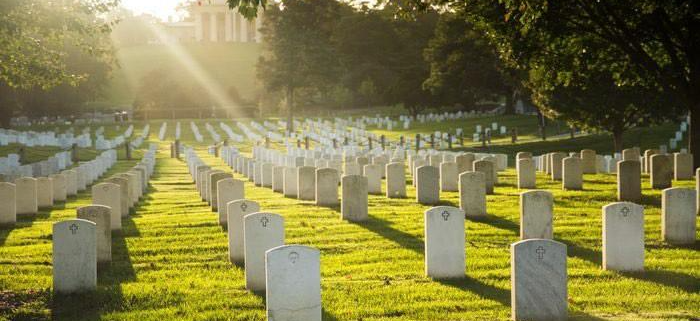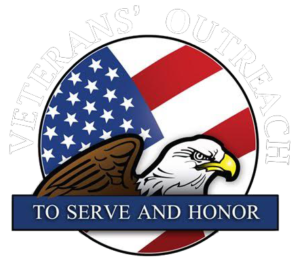22 Things You Never Knew About Arlington National Cemetery
Reader’s Digest, Emily Goodman Updated: Oct. 22, 2021
Arlington National Cemetery honors those who have fought for our country’s freedom and is also steeped in a treasure trove of rich history.
There are more than 400,000 veterans there
Three million people visit Arlington National Cemetery each year to honor the more than 400,000 veterans who are there. The vast grounds comprise 639 acres—only a small handful of other national cemeteries are larger.
It’s not just a cemetery for soldiers
War correspondents, chaplains, military nurses, and doctors—such as yellow fever pathologist, Walter Reed—are also at Arlington. The cemetery isn’t only for Americans, either. The Geneva Convention mandates that prisoners of war who die in captivity should be honorably buried. So, Arlington is home to one German and two Italian POWs from World War II.
Many famous people are buried there
Among them are boxer Joe Louis (who served in the Army), Academy Award winner Lee Marvin (a former Marine), and the architect of D.C., Pierre Charles L’Enfant (who left France to join the American Revolution). Though he remains missing in action, Glenn Miller—whose Army Air Force Band entertained more than a million troops—has a memorial headstone in the cemetery.
Nearly 30 funerals are conducted each day
Each weekday, Arlington conducts as many as 30 funerals—but receives another 35 requests for services. Because of demand, wait times for funerals are long, averaging four months with the longest waits around seven months. The cemetery conducts a smaller number of services (usually no more than eight) on Saturdays and none on Sundays.
The cemetery grounds once belonged to George Washington’s grandson
The property itself originally belonged to George Washington Parke Custis, who was both the adopted grandson of our first president and the father-in-law of Robert E. Lee. The Lee family abandoned their Arlington estate at the start of the Civil War, and the U.S. Army seized it to help defend the capital. As the war dragged on, however, they started using the land to bury causalities.
A Supreme Court ruling almost resulted in the exhumation of thousands of graves
Custis’ grandson George Washington Custis Lee was determined to reclaim the land that once belonged to his family. He brought the dispute to court in 1870, claiming the land was illegally confiscated and that he was the legal owner. In December 1882, the U.S. Supreme Court ruling returned ownership to Custis Lee. But he sold the property back to the government in 1883 so they could continue honoring the nation’s fallen soldiers with a sacred resting place.
More than 6,000 Union soldiers were buried at the time of sale. If Custis Lee hadn’t sold the land back to the government, the court could have ordered the government to dig up the graves and move them elsewhere.
The first burials were racially integrated
The first burials at Arlington were racially integrated. White and Black service members, as well as civilian government employees, were laid to rest side by side. Once Arlington became a national cemetery in 1864, however, all subsequent burials were segregated by race until Harry Truman desegregated the military in 1948.
The first service member was buried at Arlington before it became a national cemetery
It’s been 154 years since the very first soldier was buried at Arlington. On May 13, 1864, Private William Henry Christman was laid to rest in the cemetery after less than two months of serving in the 67th Pennsylvania Infantry. He died of measles. But the War Department didn’t officially designate Arlington as a national cemetery until a month later.
Nearly 4,000 former enslaved people are buried there
African-Americans who lived in Freedman’s Village were buried in Section 27 of the cemetery. Most of their headstones are only inscribed with “civilian” or citizen” instead of dates and terms of endearment. But some of the graves do include small biographical details.
A First Lady planted the first cherry blossom tree
You can thank First Lady Helen Taft, President Taft’s wife, for the beautiful cherry blossom trees that bloom in the cemetery each spring. A member of the National Geographic Society wrote to Mrs. Taft detailing a plan to plant Japanese cherry blossom trees around the Tidal Basin. Mrs. Taft fell in love with the idea and started making arrangements immediately. When the Japanese consul was informed of Mrs. Taft’s plan, the country offered to donate 3,000 of its coveted flowering trees. After the trees were planted, Mrs. Taft and the Japanese ambassador’s wife planted the first two cherry blossom saplings together in 1912. Today, those trees still stand tall.
The first batch of cherry blossom trees had to be destroyed
Two years earlier, in 1910, the United States received Japan’s generous donation of 2,000 cherry blossom trees to plant in the cemetery. But to everyone’s dismay, the trees were disease-ridden from an infestation of insects. President Taft granted his consent to burn the trees because they needed to be destroyed. Yet again, the mayor of Tokyo and others from Japan kindly sent a new bundle of 3,000 cherry blossom trees to the U.S. Capitol in 1912.
Today more than 8,600 native and exotic trees dot the expanse of Arlington National Cemetery with a vast array of cherry blossom trees included.
Only two U.S. Presidents are buried in the cemetery
All presidents—regardless of military service—are eligible for interment at Arlington. That said, only two are buried there: William Taft and John F. Kennedy, whose widow, Jackie, and brothers Robert and Ted rest in peace beside him. Abraham Lincoln’s son Robert is also at Arlington, despite his wishes to be buried beside his father in Springfield, Illinois. (Robert’s wife arranged his services and chose Arlington.)
A granite monument more than 14 feet tall marks Taft’s grave. But Kennedy’s burial plot is a bit more elaborate. Initially, his 20 feet by 30 feet plot was surrounded by a white picket fence. But when more than 16 million people visited his grave after his assassination, the Kennedy family and cemetery officials decided to construct a more suitable gravesite for
the public’s viewing. On July 20, 1967, Jacqueline Kennedy lit the Eternal Flame, which now burns from the center of a 5-foot flat stone located at the head of his grave.
You can find any grave using the cemetery’s phone app
In 2013, Arlington launched their free mobile and web app, ANC Explorer. The tool allows users to locate any grave at the cemetery and view burial records as well as front-and- back photos of the headstones and memorials. The app also provides directions for how to get to each one.
Medal of Honor recipients are also buried there
One of the more notable recipients is Private Henry Johnson located in Section 25. He was awarded the Medal of Honor in June 2015 for his bravery in World War I. In May 1918, a dozen German men attacked him and took a fellow service member captive during a raiding party. Despite Johnson’s wounds, he pursued the enemy and used nothing but a knife to save him and his combat buddy. His daring actions earned him the nickname “Black Death.”
One crypt at the Tomb of the Unknown Soldier is empty
More than 2,000 unidentified soldiers lie beneath the Tomb of the Civil War Unknowns. The Tomb of the Unknown Solider, however, has just three: one from each World War and another from the Korean War. An unknown Vietnam vet rested beneath the tomb for more than a decade. But in 1998, advances in DNA testing allowed for that soldier, Air Force
1st Michael Joseph Blassie, to be identified. Blassie was then exhumed and reinterred in his home state of Missouri at the request of his family.
The Tomb of the Unknown Soldier is guarded 24/7
Rain or shine, 24/7/365, the Tomb Guard sentinels keep a watchful eye on the Tomb of the Unknown Soldier. Sentinels are typically volunteers from the 3rd U.S. Infantry Regiment, the oldest active-duty infantry unit in the Army, commonly known as the Old
Guard. Only the best of this elite regiment are eligible to apply for the coveted position.
Twenty-one is an important number for the Tomb of the Unknown Soldier guards
Sentinels wear no symbols of rank as a sign of respect to those interred. When on duty, a Sentinel marches 21 steps down the black mat behind the monument’s sarcophagus, then waits 21 seconds before taking another 21 steps back. Why 21? It represents the highest symbolic military honor, the 21-gun salute.
Tomb Guards must go through rigorous training
An Old Guard member must meet rigid requirements to become a Sentinel. These include superb physical condition, immaculate military record, and certain height restrictions. He or she must also memorize seven pages of cemetery history verbatim and learn the guard-change ceremony. Once training is complete, the soldier must score a 95 percent or higher on a test to get their temporary Tomb Guard badge. But they don’t earn their permanent badge until they’ve completed nine months of honorable service for the Tomb of the Unknown Soldier.
There are many other group burials
Two of them are dedicated to astronauts. Months after the Space Shuttle Challenger exploded in 1986, the commingled remains of all seven of its crew members were buried at the cemetery. Beside the Challenger Memorial is the Columbia Memorial which honors the seven astronauts lost when that space shuttle exploded in 2003.
Arlington is the only national cemetery to hold servicemen from every war in U.S. history
The burial grounds hold the remains of those who fought in every war since the Revolutionary War. In 1892, cemetery officials exhumed some soldiers from other cemeteries who served during the Revolutionary War and War of 1812 and reburied them at Arlington.
The government pays for the headstones
The U.S. government foots the bill for the white marble headstones that dot the enormous property. There are more than 228,000 of them in all. Ahead of Memorial Day, soldiers place small flags in front of each one.
The cemetery is running out of room
Arlington National Cemetery is running out of room. About 95,000 burial spaces remain. But 22 million living Armed Forces members are eligible for them. Proposed changes to eligibility will restrict who may be buried at Arlington, but they will also allow the cemetery to remain operational for the next 150 years.



